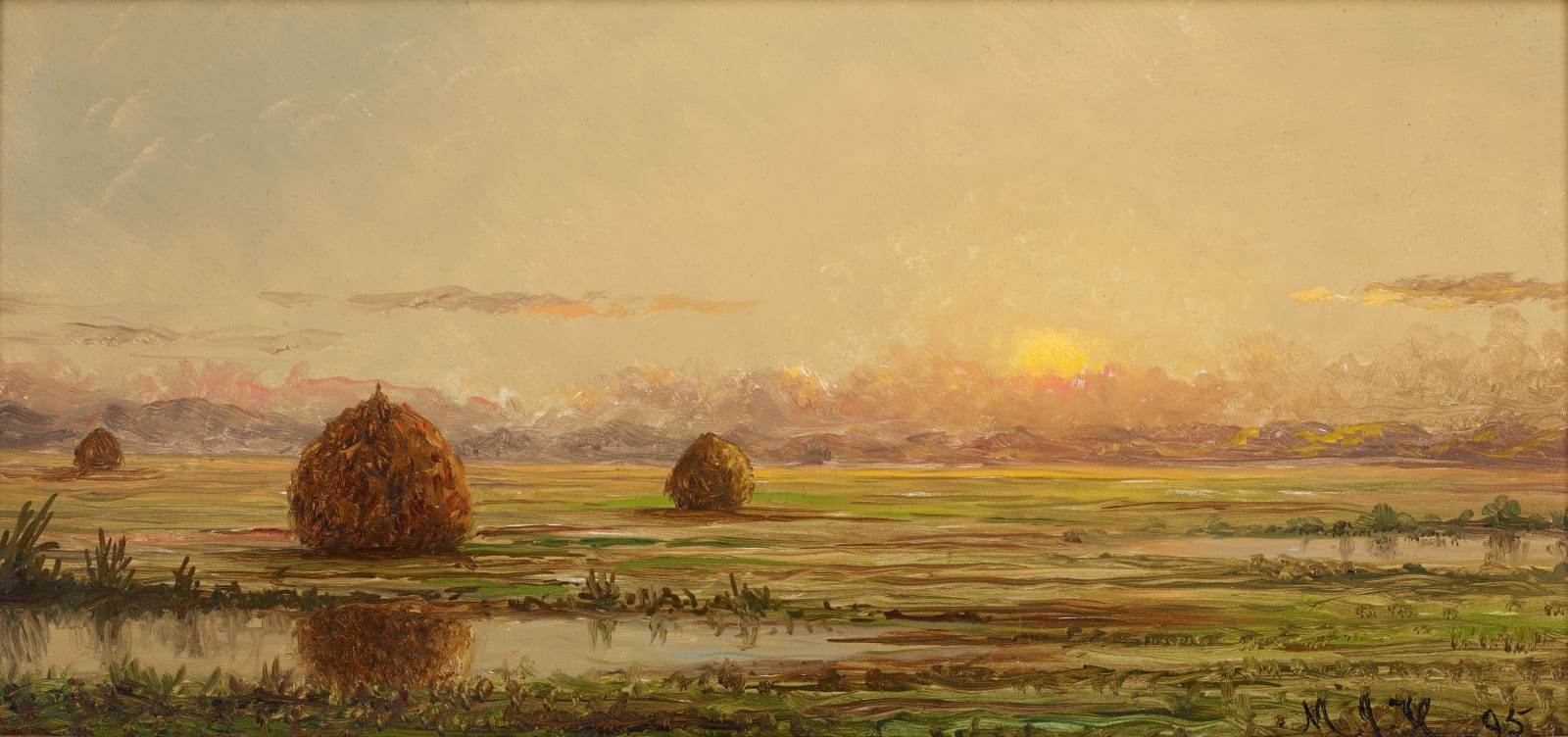Martin Johnson Heade 1819-1904
Framed dimensions: 13 1/8 x 19 3/8 inches
Born in Lumberville in Bucks County, Pennsylvania, he exhibited his very first works at the Pennsylvania Academy of the Fine Arts, and traveled several times to and from Europe in the late 1840s. In the late 1850s his interest in landscape painting was piqued due in part to his acquaintance with artists John Frederick Kensett (1816-1872) and Benjamin Champney (1817-1907). He would later move into a New York City apartment building where some of the Hudson River School painters resided, including Church. Heade traveled widely, spending a fair amount of time in Brazil, where he studied and painted hummingbirds, orchids and tropical landscapes. He would eventually settle in Saint Augustine, Florida, where he would live and work until his death.
In Sunset, Heade subtlety captures the effects of the setting sun on this quiet landscape. He composes the scene in a horizontal format, a composition style that was popular with Luminist painters. Haystacks in marsh land were a favorite subject for the artist, one that he explored repeatedly throughout his career. Heade carefully observed the details of the natural world, but did not slavishly copy them. Instead he wanted to capture the unique characteristics of the landscape not the exact location. He believed the marsh held universal meaning as a place for introspection and contemplation – a place to commune with nature in quiet solitude.
Provenance
Frederick Mont and Victor Spark, New York, New York;Ernest Rosenfeled, New York, New York;
Parke-Bernet, New York, sale of November 18, 1965, lot 57;
Acquired directly from the above sale;
Collection of Edward E. White, New York;
By descent in the family;
Sotheby's, New York, sale of May 24, 2006, lot 1;
Acquired directly from the above sale;
Collection of Dorrance H. Hamilton;
Freeman's, Philadelphia, sale of April 29, 2018, lot 21;
Acquired directly from the above sale



